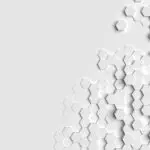A detailed comparison of Kratom and CBD products reveals contrasting production processes and testing methods. Kratom's quality is measured by mitragynine and 7-hydroxymitragynine content, while CBD products are evaluated based on cannabidiol concentration, hemp source, and the absence of residual solvents or heavy metals. Both markets employ unique approaches—Kratom uses intricate solvent extraction and HPLC analysis, while CBD benefits from CO2 extraction and third-party lab testing. Consumers should consider factors like source, purity, extraction methods, and testing results when comparing these natural supplements to ensure informed decisions that meet their specific needs.
In today’s market, consumers increasingly seek natural remedies, making the quality standards of Kratom and CBD products paramount. This article dissects the critical evaluation process for these popular supplements. We explore how understanding specific quality standards, comparing production processes, and examining testing methods are essential for discerning authentic and safe kratom and CBD products. By delving into these key aspects, consumers can make informed choices in a rapidly growing market.
- Understanding Quality Standards for Kratom and CBD Products
- Comparing Production Processes and Testing Methods
- Consumer Awareness: Key Differences in Quality Assurance
Understanding Quality Standards for Kratom and CBD Products
When evaluating quality standards for Kratom and CBD products, it’s crucial to understand the distinct differences between these two popular supplements. While both derive from natural sources—Kratom from the Mitragyna speciosa plant and CBD from the Cannabis sativa plant—their production, extraction, and regulation processes vary significantly. This comparison is essential as it directly impacts product consistency, purity, and safety.
In terms of quality standards, Kratom and CBD products are evaluated based on criteria such as source material, cultivation practices, extraction methods, and third-party lab testing. For instance, Kratom is often assessed for mitragynine and 7-hydroxymitragynine content, two primary alkaloids responsible for its effects. On the other hand, CBD products are measured by their cannabidiol concentration, source of the hemp plant, and absence of residual solvents or heavy metals. Understanding these nuances allows consumers to make informed choices between Kratom and CBD, ensuring they receive products that meet their specific needs and expectations.
Comparing Production Processes and Testing Methods
When evaluating quality standards for Kratom and CBD products, a crucial comparison lies in the production processes and testing methods employed. Both industries have unique challenges due to their natural origins and diverse applications. In terms of production, Kratom and CBD manufacturers often employ different techniques. For instance, Kratom processing may involve intricate extraction methods using solvents to isolate specific compounds, while CBD production might leverage advanced CO2 extraction, ensuring purity and a wide range of cannabinoid profiles.
This contrast extends to testing methodologies, with each industry adopting specialized practices. The Kratom market typically relies on robust HPLC (High-Performance Liquid Chromatography) analysis to detect and quantify mitragynine, the primary active compound. Conversely, CBD products are often subjected to comprehensive third-party lab tests, examining not only the presence of cannabidiol but also potential contaminants and ensuring compliance with safety standards. This comparison highlights the diverse approaches taken to maintain quality and meet the unique demands of the Kratom and CBD markets.
Consumer Awareness: Key Differences in Quality Assurance
In the realm of consumer goods, awareness and understanding are paramount, especially when comparing two popular natural products like Kratom and CBD. Quality assurance becomes a critical aspect as these substances gain popularity for their therapeutic benefits. One key difference lies in the consumer’s knowledge; Kratom, with its rich history in traditional medicine, often has a dedicated following who understand its unique properties, whereas CBD, though gaining recognition, may still be less familiar to many. This awareness gap highlights the need for transparent quality standards.
When evaluating these products, consumers must consider not only the source and purity but also the method of extraction and testing. For instance, a Kratom product might be assessed based on its strain origins and traditional preparation methods, while CBD is often judged by its concentration levels and third-party lab testing results. This difference in evaluation criteria underscores the diverse approaches required to ensure quality and safety in the natural products market, especially when comparing Kratom and CBD.
When evaluating the quality of kratom and CBD products, a thorough understanding of their unique standards is essential. Both industries operate within stringent regulations, but the specific focus areas differ significantly. While kratom’s quality assessment emphasizes consistency in potency and purity, CBD products require rigorous testing for potential contaminants and accurate labeling. Consumers benefit from this knowledge by making informed choices between these two popular natural supplements, ensuring they receive the best possible product tailored to their needs. This Kratom and CBD comparison highlights the importance of thorough quality standards evaluation.






